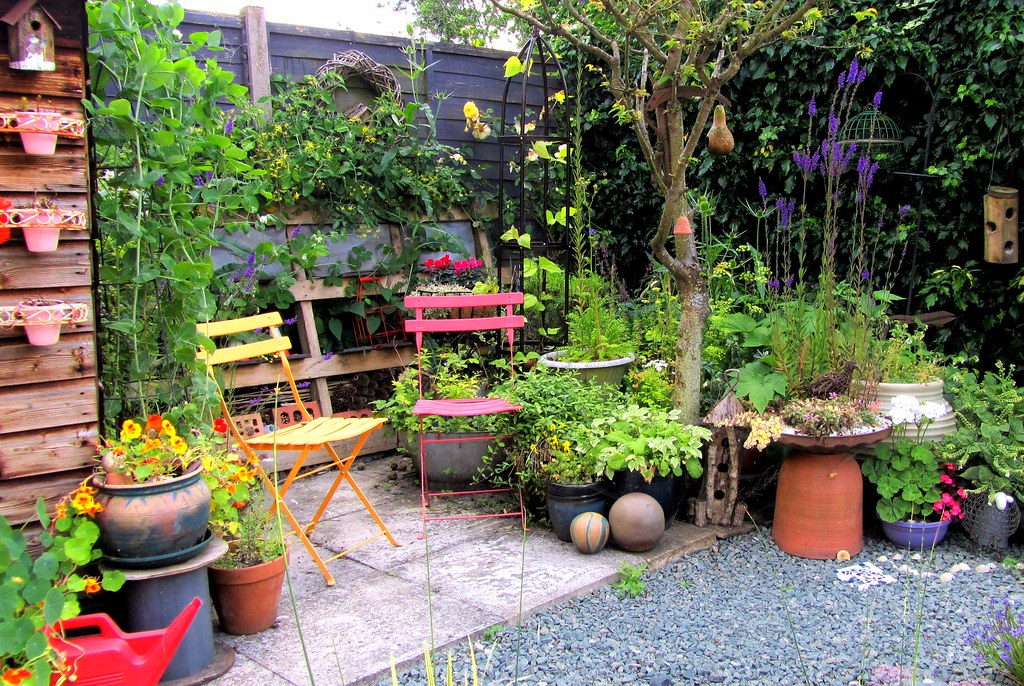Have you ever felt the sun’s embrace while you’re out in your garden, only to realize that the very warmth you’re basking in has turned your beloved snapdragons and angelonias into a crispy botanical buffet? Well, my friends, I have. And let me tell you, the journey from tropical indoor plant aficionado to a full-fledged, dirt-under-the-nails gardener has been nothing short of a rollercoaster ride of emotions, mishaps, and ultimately, the most fun I’ve ever had.
It all started with a dream, a packet of seeds, and a whole lot of naivety. I thought, ‘Hey, I’ve got this. I’ve been nurturing tropicals indoors for years. How hard could it be to transition to flowers?’ Famous last words, right? Two weeks into the relatively mild Atlanta spring, and my garden was a cautionary tale of what not to do. But here’s the twist: I wasn’t prepared for flowers, but I also wasn’t prepared for how much I would love the process of learning to garden.
The truth is, gardening is more than just a hobby; it’s a form of self-care, a stress reliever, and a mental health booster. As I stood there, surveying the horticultural carnage, I realized that the act of gardening was meditative. It was a moment of clarity in the chaos of everyday life. The fresh air, the sunshine, the connection to nature—it was all incredibly therapeutic. And while my initial attempts at gardening were less than successful, the joy I found in the process was undeniable.

Gardening, as it turns out, is a fantastic way to improve your mood. When life’s pressures mount, there’s something profoundly peaceful about turning to your garden. It’s a sanctuary where the worries of the world seem to fall away with each handful of soil you turn. And let’s not forget the exercise! Who knew that raking, digging, and weeding could be such an effective workout? It’s a productive way to get your body moving, and the rewards are twofold: a beautiful garden and a healthier you.
But perhaps the most surprising benefit of my gardening adventures has been the social aspect. Sharing my gardening blunders and triumphs has connected me with a community of fellow plant lovers. Whether it’s swapping stories with neighbors or seeking advice from seasoned gardeners, the bonds formed over shared experiences in the garden are special. It’s a support system that grows just as surely as the plants do.
And let’s talk about attention span. In a world where distractions are a dime a dozen, gardening has taught me to focus. It’s a skill that’s translated into other areas of my life, helping me to stay present and engaged. Studies have even suggested that outdoor activities like gardening can help reduce symptoms of ADHD, which is a testament to the power of putting down roots in the soil.
I’m not saying that gardening is a cure-all. But it has grown my self-esteem in ways I never expected. There’s something incredibly satisfying about nurturing a plant from seed to bloom. It’s a tangible result of your care and dedication, and it’s a confidence booster like no other.
Where does a sunburned gardener go from here? Forward, with a trowel in one hand and a watering can in the other. I’m on the lookout for flowers that can tolerate the high sun, and I’m eager for any tips the gardening community has to offer. I may have failed hard, but the lessons learned and the fun had along the way have been invaluable.
If you’re considering taking up gardening, or if you’ve had a rough start like I did, don’t be discouraged. The beauty of gardening is that it’s a journey of continuous learning and growth—both for the plants and for us. So, grab your gloves and join me in the garden. Let’s cultivate not just plants, but joy, health, and community together.
Let’s dive into the heart of our green-thumbed journey with ‘Cultivating Resilience: Tips for the Aspiring Gardener.’ As I’ve learned through my own trial and error, gardening is not just about having a green thumb; it’s about cultivating resilience and learning to thrive amidst the challenges. So, here are some tips to help you navigate the gardening world, whether you’re a sunburned novice or a seasoned pro looking for a refresher.
Understanding your environment is crucial. I learned this the hard way when my snapdragons and angelonias were scorched by the Atlanta sun. To avoid such mishaps, research the plants that are best suited for your area’s climate. For those in high sun areas like mine, consider flowers that are sun worshipers by nature. Think about adding some hardy perennials like asiatic lilies or foxgloves, which can handle a good deal of sunshine.
Let’s talk about soil – the foundation of all gardening success. It’s not just dirt; it’s a living, breathing entity that nourishes your plants. Invest in a good compost or make your own, and ensure your soil is well-draining to prevent root rot. Remember, healthy soil equals healthy plants.
Watering is another critical aspect. Over-watering is just as harmful as under-watering. Learn the needs of your plants and establish a consistent watering schedule. Early morning is usually the best time to water, as it allows the plants to hydrate before the heat of the day and reduces the risk of fungal diseases that can occur with nighttime watering.
Don’t forget to mulch! Mulch helps retain moisture, suppress weeds, and can add a polished look to your garden beds. Organic mulches like bark chips or straw can also improve soil quality as they break down over time.
Onto the topic of pests and diseases. They can be disheartening, but they’re a natural part of the gardening process. The key is to stay vigilant and act quickly. Use organic methods whenever possible, like introducing beneficial insects or using neem oil for pest control. Healthy plants are less susceptible to issues, so keep them well-fed and stress-free.
Pruning and deadheading are your friends. They may seem counterintuitive – cutting back a plant to make it grow more? But trust me, it works. Pruning encourages new growth and helps maintain the shape and health of your plants. Deadheading, or removing spent flowers, encourages more blooms and prevents plants from putting energy into seed production.
Don’t be afraid to experiment. Gardening is an art as much as it is a science. Try different plant combinations, play with colors, and textures, and don’t be discouraged if something doesn’t work out. Every failure is a stepping stone to success.
Remember to take time to enjoy your garden. It’s not just about the end product; it’s about the journey. Sit among your plants, observe the wildlife they attract, and bask in the tranquility of your personal green space.
Connect with other gardeners. Share your experiences, exchange tips, and maybe even swap plants. Gardening communities, both online and in-person, are incredibly supportive and a treasure trove of knowledge.
Gardening is a delightful dance with nature. It teaches us patience, care, and resilience. It’s a hobby that nourishes not just our stomachs with homegrown produce but also our souls with its serene beauty. So, embrace the challenges, celebrate the victories, and let the garden be your teacher. As I continue to learn and grow in my own gardening journey, I invite you to do the same. Let’s cultivate a life of growth, together.
The sun sets on our gardening chat, hoping you feel inspired to get your hands dirty and your heart full. Gardening is an adventure waiting for you, right in your backyard. So, go ahead, plant that seed, and watch as both your garden and your joy grow abundantly.
Related posts:
Gardening: A Good and Healthy Hobby — Territorial Seed Company Blog
GARDENING 101, Part 1: The Story of an Unlikely Gardener
Gardening is the best hobby there is





